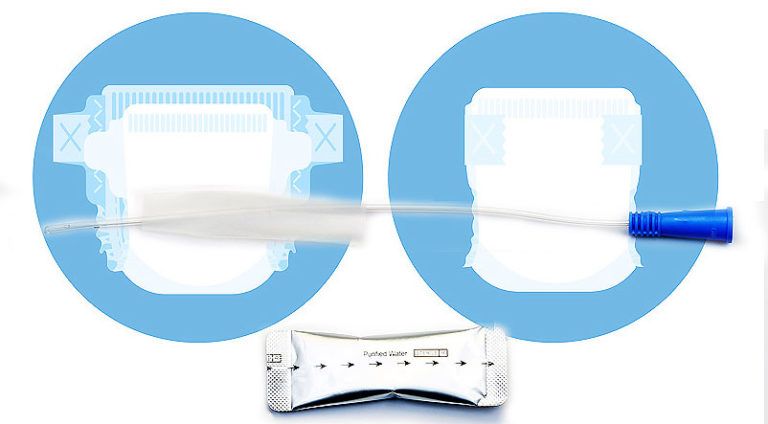While they have separate identities, incontinence and wound care have evolved to become an integrated part of one large contiguous category in the HME spectrum. Furnishing a complement of diverse products, such as adult briefs, urologicals, wound dressings, skin creams and emollients, along with pressure support surfaces, establishes a provider as a complete resource for patients at risk for serious skin problems.
Together, these products address the prevention and treatment of skin shear and breakdown that lead to chronic wounds. What’s more, these conditions dovetail with patients who need products from the major HME categories, like mobility, respiratory and rehab. Providers that see the market with this holistic view can not only build a reputation as a complete dermal health resource, but stake a significant share of the market, specialists in the field say.

HME providers win when they are able to offer great service for a range of products at a cost that helps them stay whole while supporting their community.
Manufacturers in this space need to create cost-effective solutions and we have made that our mission.
The catheter manufacturer is committed to a strong supply chain for urologicals and forging a “true partnership” with HME providers in order to “keep our partners from having to sacrifice more areas of support for end users so that they can run an economically healthy business.”
From urologicals to support surfaces, HME providers’ business in this category can grow through a complete understanding of their product lines and how patients can benefit from them, said Mark Palumbo, manager of corporate accounts for Elyria, Ohio-based Invacare.
“Understanding the customer’s needs and wants is key,” he said. “Consider the patient’s condition and what products would be helpful for them to have, such as over-bed tables, lifts, bathroom safety products, and disposables. When their focus is on the bed, customers don’t always think of the need for these products. Sometimes, the convenience of delivery at the same time as the bed is worth the additional cost.”
Bidding impact
The influence of Medicare competitive bidding has reached deeper into some segments of the incontinence and wound care category than others. While support surfaces have felt a stinging blow, the urological business has so far managed to escape the bidding process.
For support surfaces, “the obvious negative impact is lower margins to operate a bid-winning company, with less choice for the end user,” Palumbo said. “In some cases, a lack of providers has caused an increased wait time in getting the product to the patient. Companies no longer rush out a bed trusting that the paperwork will come through and Medicare will pay the correct amount on time. Less margin means this is a risk providers can no longer take.”
“On top of that, there’s a service component that seems to get lost in the shuffle,” he continued. “On paper, some people see the cost of equipment acquisition and a monthly allowable. Pickup and delivery of the equipment, service calls, replacement costs and employee time, are not taken into account. At the end of the day, the patient may suffer, product choices become nonexistent and they are locked into one, or a limited number, of providers.”
Due to the lobbying efforts of an HME coalition consisting of United Spinal, Spina Bifida Association and AAHomecare, the urological segment has managed to be excluded from competitive bidding, though it had been scheduled to be part of the program in January 2017.
The expectation led to a flurry of direct-to-consumer acquisitions in the urology space, Wells said.
Retail opportunities?
The limitations of competitive bidding for supplying support surfaces could conceivably bring more retail sales into the market, but at this point Palumbo isn’t sure exactly how vigorously it will develop.
“The need for homecare beds and support surfaces will continue to grow as the population ages,” he said. “Access points to equipment and how it is paid for will likely continue to evolve. For those with the financial means, skipping the complication of insurance coverage and exploring retail may seem appealing, but there will always be a large part of the population that relies on the Medicare benefit they paid into their entire lives.”
If there is one sales channel that HME providers might have overlooked, it is the local long-term care market, Palumbo said.
“Logistically, providers can act as a warehouse with next- or same-day delivery service and repair capabilities,” he said. “This fills a void and provides a service not typical on a local level for long-term care facilities. In addition, clinical outcomes are important to long-term care facilities, so HME providers must stay educated on providing clinically effective support surfaces.”

more RESOURCES FOR HME PROVIDERS & PARTNERS
 We encourage our HME partners to share all of Cure Medical’s marketing materials including our product videos with your customers, courtesy of our YouTube channel.
We encourage our HME partners to share all of Cure Medical’s marketing materials including our product videos with your customers, courtesy of our YouTube channel.
All of Cure’s resources are available to help inform your customers about their options, and how they can CHOOSE A CURE!
Have a question? The Cure Medical team is here to assist you! We are your partner, your manufacturer, and we always will be. Contact us today.
The business articles shared on our website are designed for our distribution partners and dealers to assist with their efforts to educate, engage with and support the disability community as well as the medical professionals who assist our customers.

